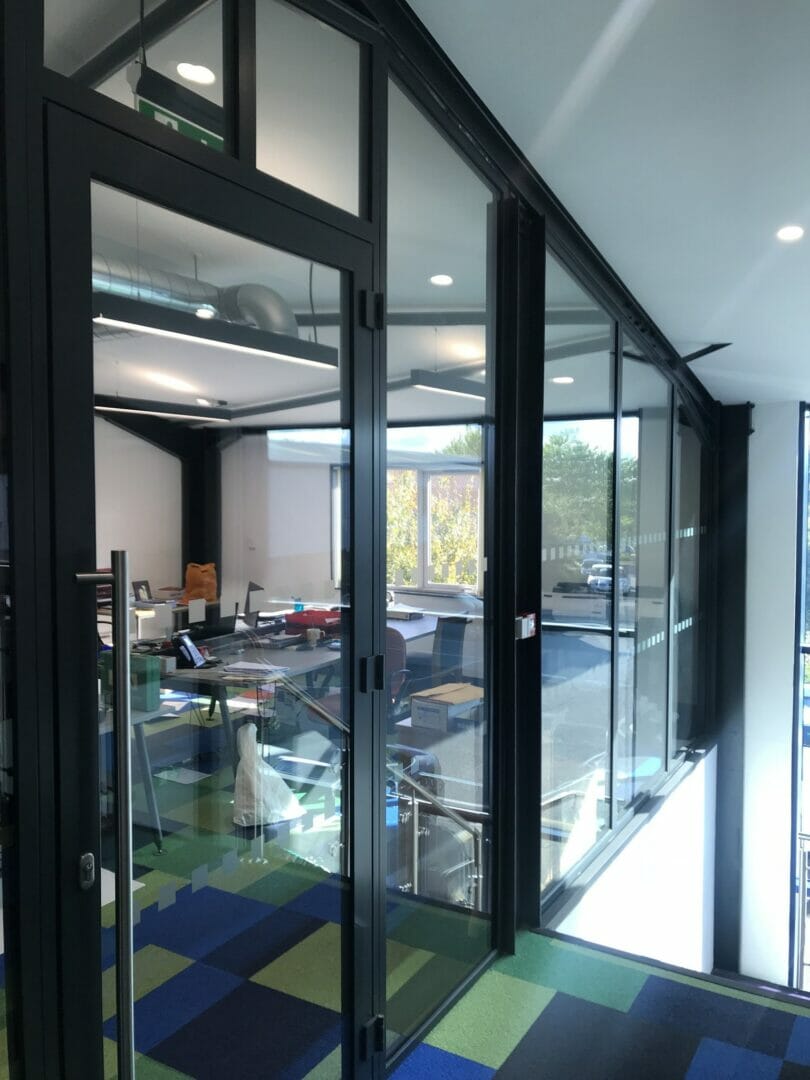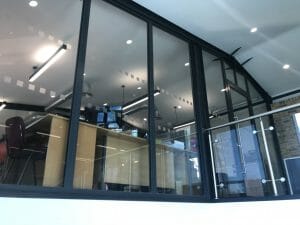
Wrightstyle, the advanced steel and aluminium glazing supplier, has completed work at the refurbished offices of WS Swift, which provides domestic and commercial heating services and design development in building services engineering.
The project involved the supply and installation of WSL 60-F1 series FR curtain walling for internal fire-rated screens above a central atrium, along with two sets of Wrightstyle’s pioneering unlatched door system, and all fire rated to 30 minutes of integrity and insulation.
Wrightstyle was the first company to develop and launch the breakthrough unlatched door system, which is available in single or double leaf format, fully glazed, using non-selective door leaf push/pull technology, and offering a wide range of surface finishes including stainless steel.
The company also offers a range of single and double leaf door systems for integrity only or integrity and insulation, with a comprehensive range of options to meet any specification.
Earlier this year, the company also launched a leaf and half leaf door system, to provide integrity and insulation for either 30 or 60 minutes (EI-30 and EI-60).
There can be several reasons for having a double leaf door with different leaf sizes – for example, where the opening is restricted in width, or for other ascetic, design or space restriction reasons.
It therefore allows for easy pedestrian traffic using one operating leaf, with the other leaf coming into operation if bulkier equipment is being moved through the doorway.
“Much of our work is for overseas customers in the Middle East or Asia, so it was a pleasure to work with WS Swift as we are both based in Devizes!” said Jane Embury, Wrightstyle’s marketing director.
The company is a champion of fire safety and recently raised concerns with the government about the inadequate enforcement of fire specifications, of particular concern in the wake of the Grenfell Tower disaster.
Wrightstyle has first-hand experience of doors with untested or incompatible fire-resistant glass being accepted as fire doors within the regulatory definitions despite the fact that they are clearly not within the permissible limitations of their supplied test certification.


